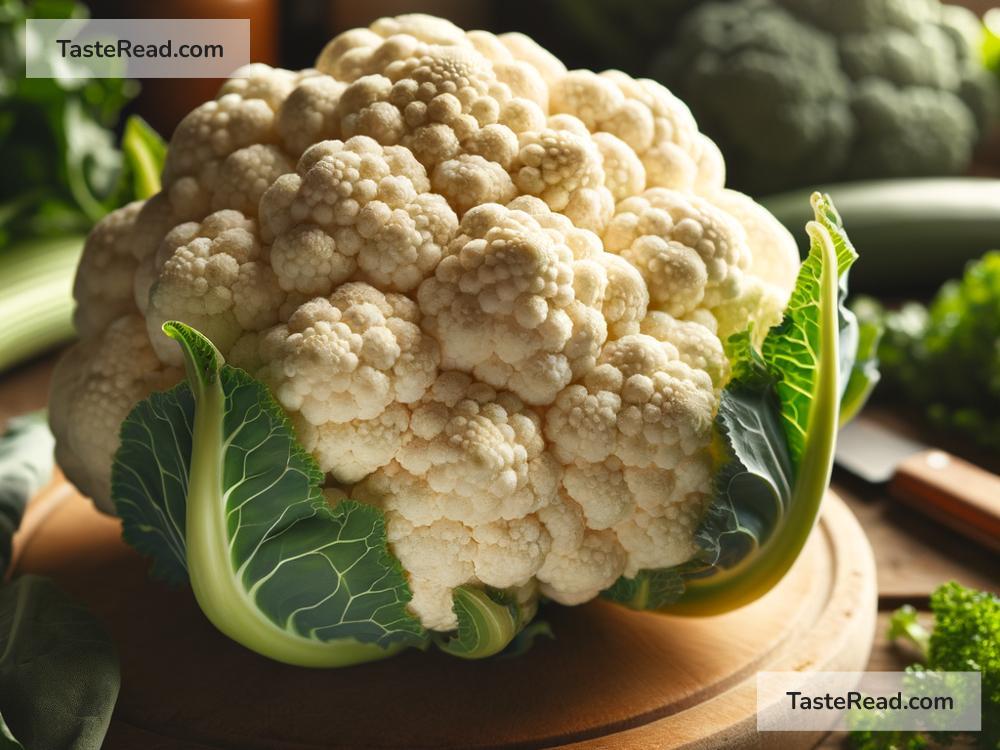The Mystery of Cauliflower and Its White Color
When we think about vegetables, they usually come in a wide range of vibrant colors—red tomatoes, green broccoli, orange carrots, and purple eggplants. But one vegetable stands out as an exception to this colorful rule: cauliflower. Have you ever wondered why cauliflower is white? It seems like an ordinary question, but the answer is surprisingly interesting and ties back to its unique growth process and biology. Let’s explore the mystery behind this pale vegetable!
What is Cauliflower?
Cauliflower is part of the cabbage family, scientifically known as Brassica oleracea. This family includes other familiar vegetables like broccoli, kale, cabbage, and Brussels sprouts. All of them share some similarities in taste and nutrition, but cauliflower’s appearance sets it apart. Its dense, clustered head—called the “curd”—is considered the edible portion of the plant. However, unlike its green cousins like broccoli, cauliflower stays white.
Why Isn’t Cauliflower Green?
Most plants, including vegetables, are green because they contain a special pigment called chlorophyll. Chlorophyll helps plants absorb sunlight and convert it into energy through a process called photosynthesis. This green pigment is a sign that the plant is actively producing energy. So why doesn’t cauliflower have chlorophyll?
The answer lies in the way cauliflower grows. Farmers often cover the budding cauliflower heads with large leaves to shield them from sunlight while they develop. This process is known as “blanching.” Without exposure to sunlight, cauliflower doesn’t create much chlorophyll, which is why it stays white instead of turning green like broccoli or other leafy vegetables.
Blanching isn’t entirely natural—it’s a technique done intentionally by farmers. If cauliflower were left exposed to direct sunlight, the plant would likely turn greenish or purplish due to chlorophyll production. But most people prefer their cauliflower white, so farmers use blanching to keep its color intact.
Natural Protection from the Sun: The Role of Leaves
Cauliflower’s thick outer leaves play a big role in keeping it pale. The broad green leaves bend over the developing head and act like a natural canopy, blocking sunlight from reaching the plant. Even in the wild, the leaves themselves help limit sunlight exposure. This self-shading mechanism ensures the plant grows differently from other vegetables.
Because the head (curd) is not actively photosynthesizing like the leaves, it stays white. This makes cauliflower look unique, but it also means that it doesn’t have the same levels of chlorophyll or carotenoids (which are responsible for colors like orange and red) found in other vegetables.
Is White Cauliflower Less Nutritious?
At first glance, you might think that cauliflower is less healthy than colorful vegetables because it doesn’t have pigments like chlorophyll or carotenoids. Surprisingly, cauliflower is still packed with nutrients. It’s rich in vitamins C and K, fiber, and antioxidants. These nutrients are essential for supporting your immune system, improving digestion, and protecting your body from harmful free radicals.
In other words, don’t let its pale appearance fool you—cauliflower is as nutritious as its green cousins like broccoli and kale!
Moreover, there isn’t just one type of cauliflower. Did you know there are colored varieties as well? Orange, purple, and green cauliflowers exist, and they are full of extra nutrients like beta-carotene (in orange cauliflower) and anthocyanins (in purple cauliflower). These pigments add nutritional value, but the classic white cauliflower remains the most popular and widely consumed.
Why Do People Love White Cauliflower?
There’s no denying that cauliflower’s soft white color makes it stand out among other vegetables. Its neutral appearance reflects its mild taste and versatility. Cauliflower can be used in a variety of dishes, including salads, curries, soups, and even pizza crusts! It easily absorbs spices and flavors, making it a favorite for many home cooks.
Recently, cauliflower has become a trendy substitute for carbs in recipes. People use it to make cauliflower rice, mashed cauliflower, and even gluten-free cauliflower pizza dough. Its mild flavor and texture make it a great low-carb option for those looking to eat healthier.
A Vegetable Full of Mystery and Wonders
The mystery of cauliflower’s white color is tied to nature and farming techniques. Without sunlight exposure, the cauliflower stays pale and unique, making it different from many other vegetables. But while its color may be simple, cauliflower itself is far from boring! It’s packed with nutrients, incredibly versatile, and loved by people all over the world.
Next time you take a bite of cauliflower, take a moment to think about how it grows and why its color sets it apart. Whether roasted, steamed, or blended into a creamy soup, it’s a vegetable worth appreciating—not just for the way it nourishes our bodies but also for the fascinating story of how it gets its pale color.
So the next time you walk through the produce aisle and spot cauliflower, you’ll know the secret behind its mystery. White doesn’t mean dull—it’s a reflection of its fascinating growth process and its role as one of the most versatile veggies around!


